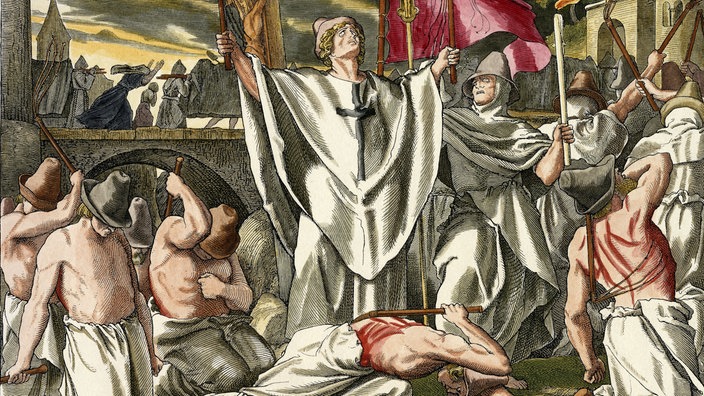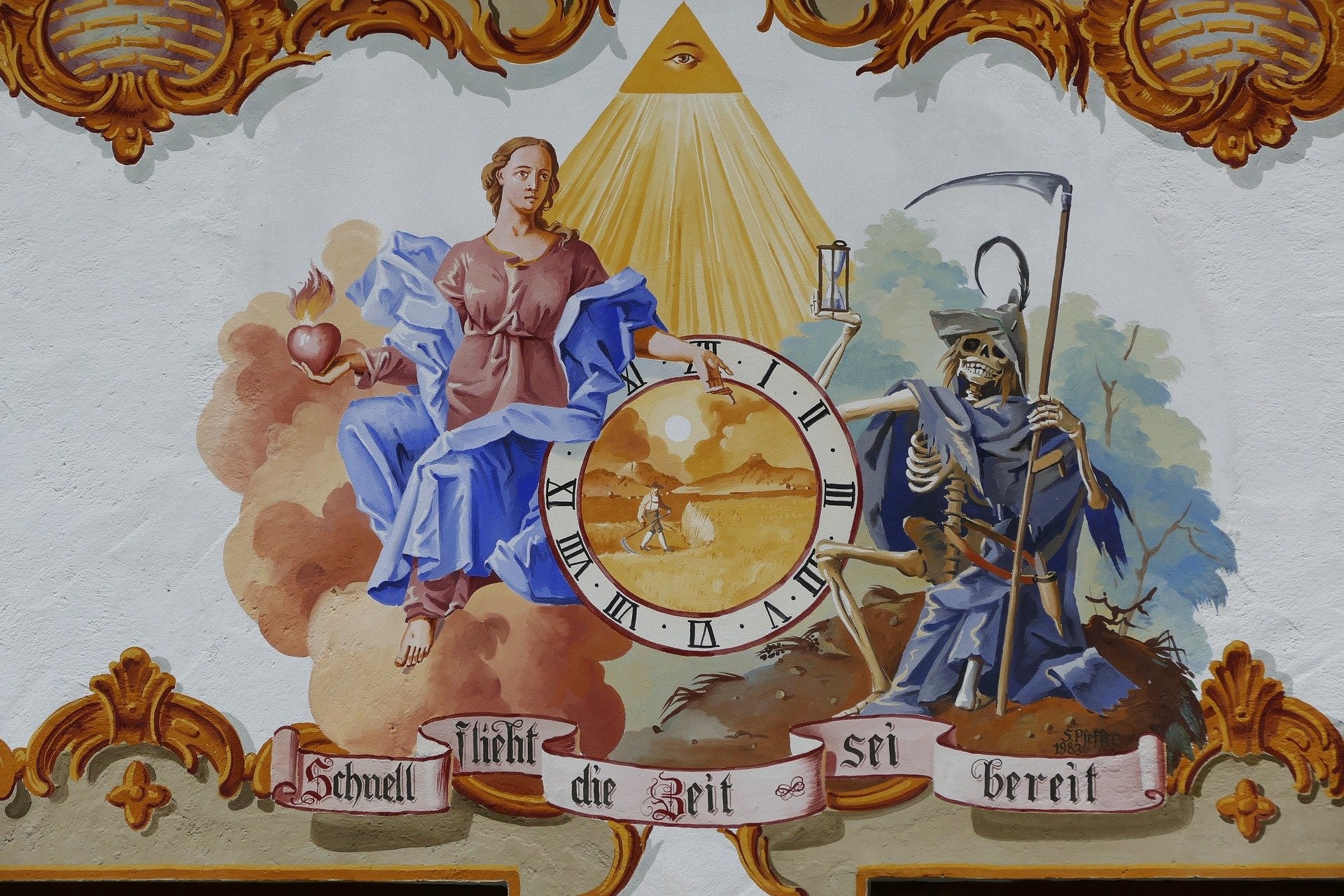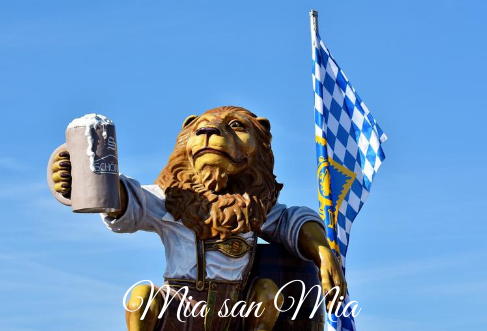The history of the Passion Play in Oberammergau began almost 400 years ago .
The plague raged in many parts of Europe and did not stop at Oberammergau. In order to put an end to the misery, the people of Oberammergau decided to take a vow . In 1633 they vowed to perform the Passion and Death of Christ every ten years , provided no more die of the plague.
The village was heard and so the people of Oberammergau played the first passion play in 1634 . The people of Oberammergau have kept their promise to this day. From May 16 to October 4, 2020, the 42nd Oberammergau Passion Play will take place. Since 2014 these have been declared and recognized as intangible cultural heritage by UNESCO . Around 500,000 visitors attended over 100 performances in 2010.
Close your eyes and listen - heavenly...
Aha! Cool...
It has only been known since 1894 that the plague is caused by bacteria in the blood and is transmitted from rats to humans by fleas .
The people of the Middle Ages did not yet know where the plague came from, although the first theories were spread quite quickly. This ranged from bad winds , an unfavorable constellation of Mars, Jupiter and Saturn to contaminated water , which people in many places blamed for the new disease.
Plague as harbinger of apocalypse
In his woodcut of the horsemen of the apocalypse , Albrecht Dürer gave the basic fears of pre-modern man a visible form that was valid for centuries.
The four horsemen embody victory, war, hunger and death ; according to the biblical text of the apocalypse, they come to kill with the sword, famine and plague.
The plague represented fear, powerlessness, and doom . Since its cause was not known, it was held hostage by God . It was believed that God used it to punish sinful mankind in regular waves.

Four Horsemen Apocalypse, woodcut Albrecht Dürer, 1497
Plague Doctor and the Invention of Quarantine
Until the 18th century , Europe was plagued by waves of plague. It was not yet known that the disease was transmitted by fleas from rats . Due to the lack of sanitation , rats swarmed the cities and the plague was able to spread quickly.
They tried to fight the stench with smoke . Smoking also indirectly improved hygienic conditions. But the doctors were largely powerless , no matter how impressive they might appear in their bizarre protective clothing .
Only after several hundred thousand people had died did it become clear that the spread of the disease could be contained by isolating the sick . Around 1423 , Europe's first plague hospital was located on an island near Venice .
The Venetians suspected a connection between the plague and shipping , and travelers initially had to be observed for 40 days - hence the term " quarantine" from Italian "quaranta = 40" (quaranta giorni). A plague letter was a health pass that had been introduced in Venice in 1374.

Plague doctor with beak mask
Unbelievable
Jews poisoning wells?
Those responsible for the contaminated water were found just as quickly . The Jews were accused of poisoning wells and were then persecuted, expelled or murdered. Skeptics did notice that the Jews also contracted and died from the plague, but it was a useful image of the enemy . As a result, entire Jewish quarters were burned down and their residents murdered.
role of the church
In the Middle Ages, people believed that life on earth was only a transitional stage leading to a better life in the hereafter . Deeds of penance and good deeds prepared for life in the afterlife. For the people, diseases were above all a punishment from God.

Geissler in Germany
The Church , which was unable to help against the Black Death despite the richest offerings from the faithful, increasingly lost its influence. The consequences of the plague were not limited to the dramatic loss of population . The plague strained the entire social order . Priests left their parishes, doctors the sick...
Some believers began flogging themselves . By doing this, they wanted to atone for their sins and ensure that they would have credit in the afterlife . The church's sale of indulgences also increased enormously during the times of the plague. With the help of indulgences, people could buy their freedom from their sins and thus also from the purifying process of purgatory for a certain period of time.
related to the Passion Play
Pastor Daisenberger writes in his local chronicle: “The first decades of the 17th century passed in peaceful peace for Oberammergau . But now came the extremely distressing time of the Thirty Years' War , which was waged from 1618 to 1648 and the memory of which is still alive among the people under the name of the Swedish War.
As early as 1631, contagious diseases broke out in both Swabia and Bavaria. The local village was saved from infection by diligent vigilance until the church consecration festival in 1632 . A man from here named Kaspar Schisler brought the plague to the village.
In the great sorrow that the terrible disease had brought upon the congregation, the superiors of the congregation got together and made a vow to keep the Passion tragedy every ten years , and from that time on not a single person has died , although some still had the plague marks on them.”
At Pentecost, the people of Oberammergau performed the “ play about the suffering, death and resurrection of our Lord Jesus Christ ” for the first time on a stage that they set up in the cemetery above the fresh graves of those who had died from the plague .
Pandemic - plague of misanthropy
A pandemic is a rapidly spreading disease that affects entire regions, countries and continents . In contrast to the epidemic, it is not regionally limited . This can quickly jeopardize the functionality of economic life and public order and lead to an overload of health care structures.
Historically, there were three major plague pandemics that swept the world before the disease's trigger was finally discovered: the Plague of Justice , which killed up to 10,000 people a day in 561 BC . The Black Death , which wiped out up to a third of Europe's population between 1334 and 1372 , occurring repeatedly in small eruptions. And the third plague pandemic that ravaged much of Asia between 1894 and 1959 .
It was only in 2010 that a study was published in the journal "PLoS Pathogens" in which researchers finally debunked the mystery of the plague in an old London cemetery . To date, the clear detection of the bacterium has failed. The anthrax bacterium or the Ebola virus-like pathogen could have caused the Black Death, researchers suspected.
An international team of researchers has now searched again for traces of the plague bacterium Yersina pestis in bones and teeth from a mass grave in East Smithfield - and has found it. Yersina pestis was responsible for the Black Death , explains Johannes Krause from the University of Tübingen.
The team from the Geosciences department used the latest techniques to enrich the microscopic amounts of the bacteria's genetic material (after all, it is 650 years old! ) and also to be able to detect small fragments . Krause calls this " molecular fishing ."
What is there to see?
Lüftlmalerei - "Bavarian Graffiti"
As beautiful as open picture books...
The colored design of the house facades in the region of Oberammergau, Mittenwald, Garmisch, ... should on the one hand convey the illusion of architecture, depict columns, staircases, windows and doors that did not actually exist. On the other hand, the frequent depiction of saints and biblical scenes expressed the need for personal protection and the faith of the Catholic population .

Rotkäppchenhaus, Oberammergau
Lüftlmalerei is fresco painting and very durable . Fresco (Italian pittura a fresco : painting on the fresh wall). It is a painting technique in which color pigments rubbed in lime water are applied to lime plaster while it is still wet and therefore cannot flake off. In other words, the colors "silicify" with the plaster in a chemical reaction , making the pictures weatherproof and durable for a long time.
As the water evaporated, the lime absorbed carbonic acid from the air to form calcium carbonate, and the color pigments combined with the lime . This chemical process turns the painting into a rock-hard, water-insoluble layer whose glassy shimmer still unfolds its charm.
Fresco painting was already known in ancient Egypt , in the Minoan culture of Crete and in the Peloponnese. In the 16th century this technique reached its peak with the " Last Judgment " in the Vatican and the " Creation " by Michelangelo in the Sistine Chapel.
The origin of the amiable term Lüftlmalerei is unclear. The word Lüftlmalerei is probably associated with the artist Franz Seraph Zwinck , who created impressive pictorial programs between Mittenwald and Oberammergau. The property of the Zwinck family bore the house name “Lüftl” , as can be verified for the 19th century.
Sources of inspiration for Zwinck's Lüftlmalereien were graphic creations by artists such as Paul Rubens. The prints came from Augsburg, the Netherlands and Italy. You exchanged templates among your own kind or got them from traders who moved from place to place.

luftlmalerei
Leavenworth – Bavarian customs as a successful export good…
Leavenworth comes across as more Bavarian than a Bavarian village . The small town in the northwest of the USA thrives on white and blue customs. Rustic architecture , Lüftlmalerei and German-language signposts let Bavarian flair come up. About a million visitors come to the 2,000-person Washington state town each year...
